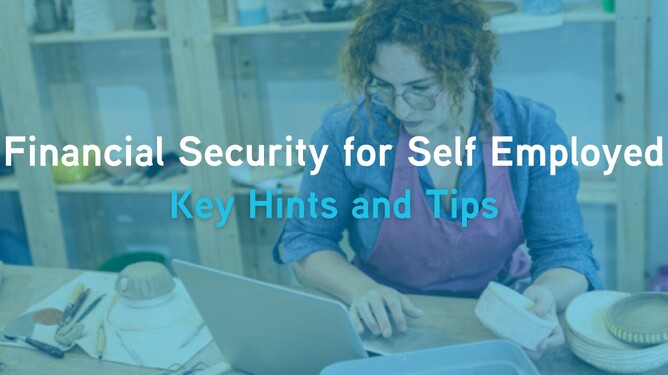Financial Security for the Self-Employed: What You Really Need to Know
Working for yourself gives you freedom — but it also means the buck stops with you. No employer sick pay. No automatic pension contributions. No one holding back tax for you. That’s why financial resilience isn’t a “nice to have” for the self-employed; it’s essential.
This guide pulls out the key ways to build a stronger financial base so you can handle lean months, tax surprises, and the unexpected without stress.
1. Build a Proper Cash Reserve — Not Guesswork
Most people are told three to six months of cover is enough. For the self-employed, that’s not realistic.
The guide recommends aiming for six to twelve months of essential costs — and splitting this into two pots:
• Personal Emergency Fund - Covers your core life costs: mortgage/rent, food, utilities, transport, childcare, debt repayments, insurance.
• Business Buffer - Covers tax, NI, software, insurance, equipment, and anything else that keeps the business running.
The guide sets out four simple steps: calculate essentials, review 12–18 months of actual costs, stress-test a lean quarter, and ring-fence the cash in the right mix of easy-access and notice accounts.
2. Treat Tax Like a Monthly Bill, Not a Surprise
From day one, skim a percentage of every invoice into a separate “tax pot.” The guide outlines:
2025/26 income tax bands
Class 2 and Class 4 NI rules
Payments on account and the January/July pitfalls
Rising letters from HMRC where interest hasn’t been taxed correctly
This is about avoiding the classic “tax bill panic” that wipes out savings.
3. Make the Most of Your Tax-Free Allowances
The guide covers the allowances most self-employed people forget to use:
£20,000 ISA allowance
£4,000 LISA allowance + 25% bonus
Personal Savings Allowance (£1,000/£500/£0 depending on your band)
The 0% starting rate for savings if income is low enough
The £500 dividend allowance
Used properly, these save admin, reduce tax drag, and preserve more of your interest and returns.
4. Pensions: Long-Term Savings With Immediate Tax Benefits
This section explains why pensions matter even more when you’re self-employed:
You get tax relief at 20%, 40%, or 45%.
Strategic contributions can pull you out of higher-rate tax or the 60% marginal band between £100k and £125,140.
Carry-forward rules can help after a strong year.
The guide also notes the 2025/26 rules around annual allowance, lump-sum caps, and the abolition of the Lifetime Allowance.
5. Protecting Your Income When You Don’t Have Sick Pay
Because self-employed people aren’t eligible for SSP, the guide highlights the policies worth considering:
Income protection
Critical illness cover
Life insurance
Business interruption/overheads cover
Not as a replacement for savings — but as a safety net to stop you draining them.
It also summarises maternity allowance, NI requirements, and eligibility rules.
6. A Step-by-Step Savings Plan
The guide includes a simple checklist covering:
Open separate accounts
Automate transfers from every client payment
Build a 6–12 month reserve
Use ISAs and pensions properly
Prepare for tax deadlines
Rebalance quarterly
Track interest, dividends, and HMRC letters
Document everything clearly
It’s a framework for financial stability, not theory.
7. Practical Scenarios
Short case-style examples walk through how to handle:
Irregular income
Approaching higher-rate tax
Income near the £100k tax trap
Saving for a first home with a LISA
Plus guidance on choosing the right mix of cash accounts, investment wrappers, and when longer-term investing makes sense.
Want the Full Guide?
This blog is the essentials. The full downloadable version goes deeper into allowances, tax bands, savings structures, pension rules, and a complete action plan.

